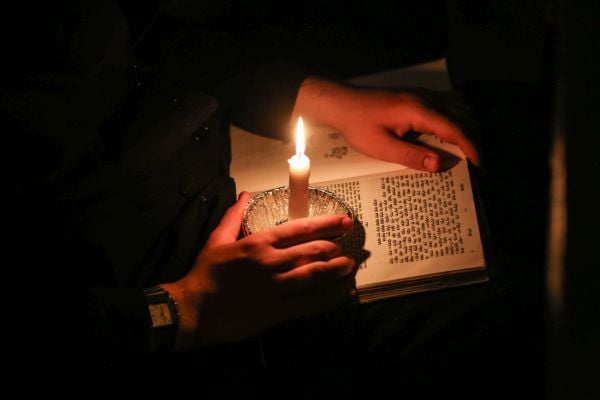It’s a mitzvah to write and recite your own kinnot if possible.
By Rabbi Ari Enkin, Rabbinic Director, United with Israel
On Tisha B’av, the day of mourning that will be observed this coming Saturday night and Sunday, we read two lesser-known texts: The Book of Lamentations, one of the books of the Bible, and also “Kinnot” which can also be translated as “lamentations” or “dirges”. Let’s see what they’re all about.
The Book of Lamentations is found in the last third of Scripture, or “Tanach” in the section called “Ketuvim” or “Writings.” Indeed, the word Tanach is an acronym for Torah, Neviim (Prophets) and Ketuvim.
Despite being called the “Book of Lamentations,” in Hebrew it is known as a “megillah” or scroll, an independent reading reserved for a specific day of the year. Just as Megillat Esther is read on Purim and Megillat Ruth is read on Shavuot, Megillat Eicha is read on Tisha B’Av.
Eicha is actually a collection of poems lamenting the destruction of Jerusalem in 586 BCE and it makes for very saddening reading.
It is one of the few books in which God is silent, suffering is described in detail, and all hope appears to be lost. We are told that the reason for all the misfortune was due to the continued sins of the Jewish people. God had warned the Jewish people to shape up, but they didn’t, so He shipped them out.
There are five chapters to Lamentations.
The first chapter describes Jerusalem as a desolate weeping widow full of disasters and calamities. In chapter two we are told that the calamities are the faults of the Jewish people who sinned against God. Chapter three begins to turn towards a theme of hope, that the punishment is for the ultimate good and one day things will be better. Chapter four is similar to chapter one though it also focuses on the Temple and not merely on Jerusalem. Chapter five is the hope for the redemption of Jerusalem and the Jewish people.
Common assumption is that Jeremiah was the author of the Book of Lamentations. He was the leading prophet during the destruction of the First Temple and in the years leading up to and after that critical time of Jewish history.
But but there are other theories.
Some suggest that Jeremiah was the inspiration for the book or that he wrote one or more chapters, while other chapters may have been contributed by someone else. The reason for these theories is that some chapters are written in feminine form and others in masculine form. There are also literary style differences between the different chapters.
The Kinnot
The other, even more lessor-known text that is read on Tisha B’av, is known as the “kinnot” – lamentations.
These are dozens of sad poems that review all the tragedies in Jewish history, from the tragedies in the desert after the Exodus from Egypt, to the destruction of the Temples, to the Crusades, to the Expulsion of Jews from Spain, right through to the Holocaust.
The entire Tisha B’av morning is spent reading these poems. A small number of kinnot are read at night, as well.
The oldest kinnot were composed by Rabbi Elazar Hakalir, who likely lived in the 6th-7th centuries, though there are other theories as to who this Rabbi Hakalir was. His kinnot are meant to resemble the tone of the Book of Lamentations. So too, many of the kinnot are written in an alphabetical acrostic.
More and more kinnot were written throughout the ages in order to “keep up” with all the tragedies and persecutions the Jewish people have endured. As a result, there are even kinnot mourning the Holocaust written as recently as the 1970s and 80’s.
Rabbi Moshe ben Yehuda Makir, a Tzfat rabbi who was a colleague of Rabbi Yosef Caro and Rabbi Isaac Luria (better known as the Arizal) wrote that it is a mitzvah for individuals to compose and recite their own kinnot on Tisha B’Av if they can.
It is no exaggeration to say that the reading of kinnot on Tisha B’av morning is a 4,000-year history lesson packed into four hours. The kinnot have an underlying theme, and their reading concludes, with a longing and return to a renewed and rebuilt Jerusalem.
MAKE THE LAND OF ISRAEL EVEN MORE BEAUTIFUL!
PLANT YOUR VERY OWN FRUIT TREES IN ISRAEL!
Farmers near the Gaza border lost family, friends and workers. Spring is here, and they desperately need help to replant the farms. Join us in blessing the People and Land of Israel.
“I will ordain My blessing for you…” (Leviticus 25:4)
JOIN ISRAEL'S MASSIVE SPRING PLANTING!




